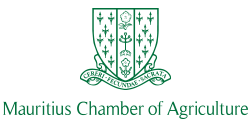In the course of the long history of the sugar industry in Mauritius, sugar producers have never failed to support the development of the sector through the substantial investments they have effected in its modernization. This has been instrumental in Mauritius honoring its sugar export commitments and in enabling the sector to fulfil its socio-economic and multifunctional role on the local front.
Fuelled by its preferential market access to the EU, the growth of the sector and its ability to meet its market commitments have been possible thanks to the development of a range of supporting services and capacity building initiatives in a number of strategic areas, namely research and development, tertiary education, vocational training, engineering, mechanisation and extension services to name but a few.
The high versatility of the crop has enabled the diversification of its main product, sugar, into a wide variety of high value-added special sugars, as well as the production of valuable co-products , such as electricity from bagasse. With all such products, co-products and services, the sugar sector has thus evolved into a vast sugar cane cluster with a very high multiplier effect at the macro-economic level.
Today, in the context of the new world economic order, the Mauritian sugar industry is determined to be competitive in order to survive. In 2001, in view of the threats and challenges ahead, namely the real risk of Mauritius sugar exports losing their competitive edge in a liberalized environment, Government launched the five-year Sugar Sector Strategic Plan (SSSP), aimed at providing the industry with the appropriate framework to improve its competitiveness and to ensure its very survival.
With the launching of the SSSP, the Mauritian sugar industry has embarked in major reforms at all levels which imply more centralization, cost reduction, enhanced productivity, manpower rightsizing, the optimal use of cane sugar resources, well-planned diversification activities and the creation of new opportunities.
In 2005, against a backdrop of decreasing revenue resulting from the drastic cut of 36% in the EU price of sugar, Government launched the Roadmap for the Sugarcane Industry for the 21st century and subsequently in 2006, the Multi-Annual Adaptation Strategy Action Plan 2006-2015.
The Action Plan contains bold and deep measures to be achieved in the sugar industry, facing the unprecedented challenges brought about by the reform of the EU sugar regime and the reduction of sugar prices. It aims at ensuring the long term viability and sustainability of the industry and enabling it to continue fulfilling its multifunctional role in the country, namely in attaining national economic, environmental and social goals.
Core objectives of the plan are to (i) further modernizing and diversifying the sector with a view to transforming it into a more cost-efficient and competitive sugar cane cluster, geared towards the production of raw, white, industrial and special sugars, electricity from bagasse/coal and ethanol from molasses, (ii) continuing to fulfill the sugar tradecommitments of the country and (iii) helping to reduce the country’s dependency on imported fossil fuels and on oil in particular.
The total cost of the projects contained in the Action Plan is estimated at Rs 25 billion (€675 million). Most projects, involving 87 per cent of the total cost (€585 million), should be completed during the 2005-2010 period so as to allow the industry to be prepared well in advance of the price cut which will be fully implemented as early as 2009.
With the implementation of the Action Plan, it is estimated that sugar production would revolve around 520,000 tonnes from an harvested acreage of 63,000 hectares, with 20% of total production coming from small planter regrouped plantations. This production level would be sufficient to ensure that the country fulfils its commitments under the Sugar Protocol and the US Global Import Quota.


